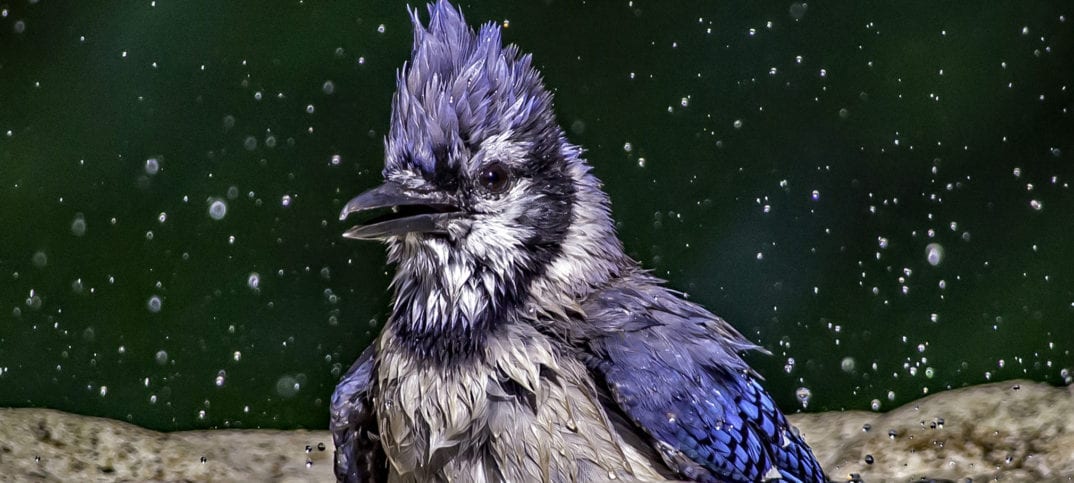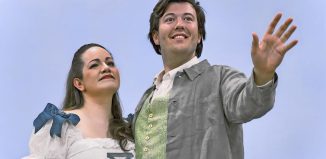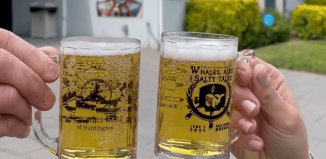By Ernestine Franco
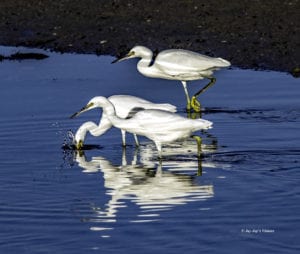
A hobby often starts merely by chance. A dad gives his young son a camera for his birthday. The son takes a few photos and has a good time. As he gets older, it becomes a passion. Then, after he retires, it becomes part of his soul and guides his vision of the world.
I am describing Jay Gammill of East Setauket who started taking pictures after his father gave him his first camera, a Brownie Starflash, and today uses a digital camera that has letters and numbers in its name as well as lots of lenses.
To call Gammill an amateur photographer does not do his photographs justice. To experience his exquisite vision, check out his first solo exhibit, “The Birds Among Us,” at the Emma S. Clark Library in Setauket throughout the month of March featuring 20 stunning images of birds taken in Canada, Maine, upstate New York and in Gammill’s own backyard over the last three years.
I recently had the opportunity to talk to Gammill about his exhibit and hobby.
How did you get into photography?
My father had the most influence on my picking up a camera. He worked for a photographic company prior to World War II and was a Navy mapping photographer during the war in the North Atlantic. Dad always had either a still or an 8mm movie camera in his hand.
Why do you photograph birds?
Many beautiful birds visit our feeders in East Setauket, and I wanted to capture some nice photographs of our feathered friends.
What else do you like to photograph?
On vacations or when visiting local areas I really enjoy photographing the interior and exterior of mansions, castles, homes and all landscapes.
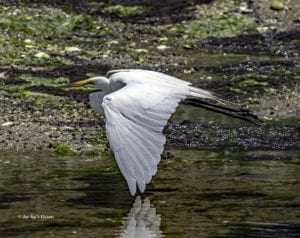
What kinds of cameras/lenses do you use to capture these stunning images?
Seventeen years ago I started with a 5-megapixel Sony, then I used a 12-megapixel Lumix bridge camera, and now I have a 26-megapixel Nikon D610 and have plans to upgrade yet again to a more professional Nikon camera. I have several lenses for the Nikon D610. In the field I use a 200-500mm lens primarily for birding and sometimes attach a 1.4 extender, increasing the focal length to 700mm. This gives me a lot of flexibility depending on the subject’s location being near or far. I also have 20mm, 50mm, 300mm and a 28-300mm lenses. The wide-angle 20mm lens (probably my favorite) can be used for landscape photography or indoors without a flash and produces excellent photos. The 50mm lens is very sharp and great for outdoor get-togethers. The 300mm lens with an extender is great for birding and the 28-300mm lens is excellent for all-around exploring.
Your photos show that you have an artist’s eye. How does your vision affect how you frame your photos and the subjects you choose?
A lot depends on the lighting. Having good light provides a variety of angles and shadows that can add interest to a photograph plus excellent detail within the photo. When looking at a subject, I try to envision how it will appear on my monitor and whether it will provide the same interest it provides me to others on social media.
You’ve described your wife Jan as your ‘spotter.’ Can you elaborate on that?
Jan has become an integral part of my bird photography. After she started coming out with me, it was evident she could pick out birds in trees faster than I could by myself. Now we enjoy finding birds together but also the exercise. It is not uncommon for her to say “take that shot” and that has proven to be very beneficial to my work.
This is your first solo exhibit. Have you enjoyed getting ready for it?
The answer is yes! I’m happy I started early on choosing my photographs and getting them printed. Visiting the library to view the exhibit location also helped. I am also working on some presentation work that will identify the subject in each photo.
How did you decide which photos to include in the exhibit?
Detail, pose and subject expression had the most influence on which photos were chosen. Some of the birds’ eyes just speak to you when you see them. You know what they are thinking.
What are your favorite photos in the exhibit?
I guess it would be the Red-tailed Hawk and the Atlantic Puffin. A part of getting the photos ready for the exhibit is framing them.
Can you talk a little about the different materials you used to do this?
There are many ways to display photos these days. I have chosen three different types for the exhibit. Some are mounted in the classic frame style. One is under ¼-inch clear acrylic with polished edges. This is a fairly expensive way to present a photograph, but it gives the photo a very unique appearance. The third method is having the photos printed on aluminum. You can have a very large picture and it will not weigh a lot, making it easy to hang, and it makes the colors really pop.
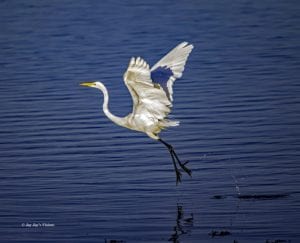
Where else have you exhibited?
I was very pleased when the Huntington Arts Council accepted two of my bird photos to be displayed in its gallery for a month last year. Another photo, of the original Fire Island Lighthouse beacon, was accepted in last year’s 100th anniversary Parks Department photo exhibit held within the lighthouse keeper’s home for a month. Two bird and two landscape photos were displayed for a month last year at the 2nd Ave. Bayshore Firehouse exhibit gallery for the Long Island Triumph Association’s art show.
Any advice for others who want to have their photos seen by others?
Post your photos on social media for a lot of exposure and to get a feel for others’ reactions to your work. I have been posting on Facebook for years now, and it has given me a good indication of what people like.
Where can our readers see other examples of your work?
I have set up my own website, www.jayjaysvisions.com, to show others my bird, wildlife and landscape photography.
“The Birds Among Us” will be on view at the Emma S. Clark Library, located at 120 Main Street in Setauket, through the month of March. For more information, please call 631-941-4080.

